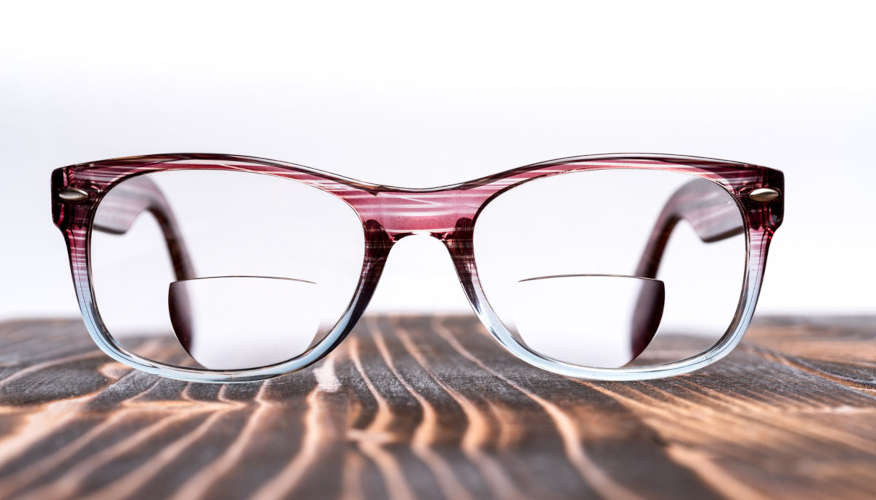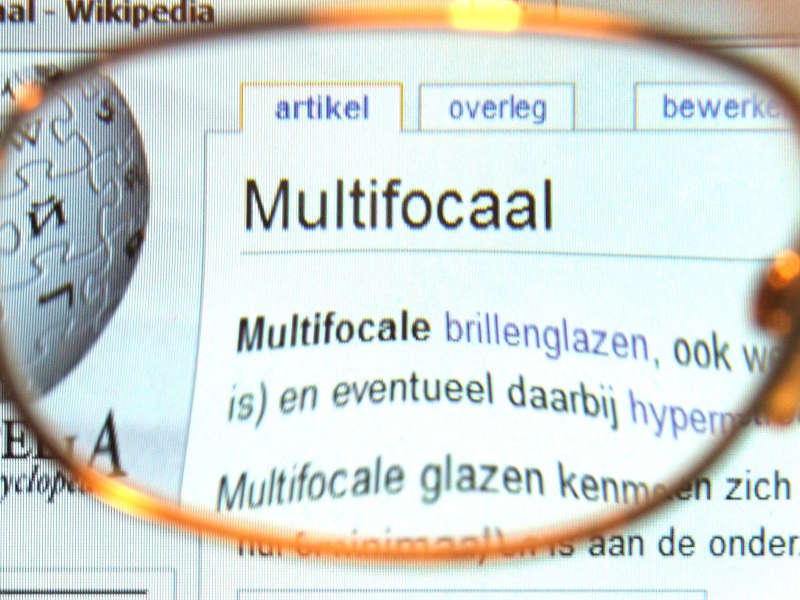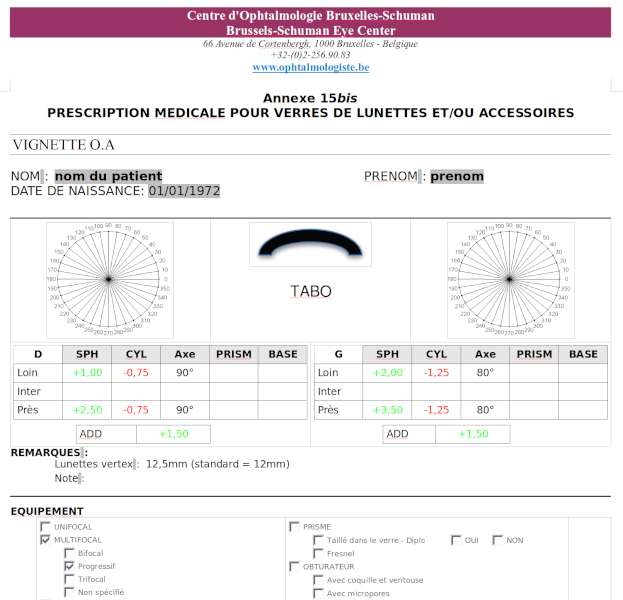

 by
Mamisoa Andriantafika
by
Mamisoa Andriantafika
Myopia (or shortsightedness), astigmatism, hyperopia and presbyopia are refraction anomalies: it means that the image perceived is blurred as it is not focused on the retina.
The latter transform the image in electrical signals sent to the brain through the optic nerve. Learning refraction anomalies help you to understand what you see and read your medical prescription for glasses.
An emmetrope person means the image is focusing exactly on the retina and therefore is perfectly clear. A refraction anomaly causes an image to focus off the retinal area. The image is blurred.
Refraction anomaly can be corrected with glasses, contact lenses or an extra or intraocular surgery.
Correcting this refraction anomaly will focus the image received on the retina. It does not mean that the vision will be clear if the rest of the visual system is impaired. For this very reason, it advised to consult an eye doctor in any situation of vision loss.
Consulting an optometrist or an optician will only correct the refraction anomaly without considering a potential underlying diseases and delay the required treatment.
Every situation of vision loss is not always linked to an optic problem. The underlying cause can be medical.
Shortsighted people have a blurred far vision, but often, still have a functionnal near vision.
Myopia is a refraction anomaly where the image is focused in front of the retina. The eye receives a distant image blurred but often is able to have a closer image clearer.
This refraction anomaly can be linked to the eye being too long, a refractive part of the eye being too convergent, usually the cornea or the lens.
A shortsighted person often sees well at very close distance, even closer than the emmetrope one. The more shortsighted, the more one can see closer.
For example, cataract, which is an opacification of the lens occuring usually with age,can induce shortsightedness. Then some affected patient complains of worsening far vision but a better near vision. They read better.
A shortsighted person cannot see correctly for far. The image gets blurry from a particular distance. The more shortsighted, the closer is the functionnal vision. With a diopter of -2.00, clear distance is about 35cm, while with a diopter of -6.00, it is at 10cm.
Cataract often induces shortsightedness.
This is why shortsighted people read close as the clear vision is situated from a very short distance of their eyes and a close distance before it gets blurred.
Therfore, close images are clear while distant images are blurred.
Refractive surgery can correct optic anomalies.
In order to correct myopia, we need to diverge rays of the image so that they focus on the retina. We can use a divergent glass or lens, the value will then be negative (-).
We could also correct myopia with surgery by modifying the most refractive parts of the eye, being the cornea or the lens, or adding a divergent lens inside the eye.
Myopia between 0 and -6.50 diopters is low to moderate, over is high myopia.
The eye being usually longer, retina extends on a larger area. It tends to be thinner and present some structure anomalies in all its layers. It is also more fragile.
We will follow particulary the periphery where tears and holes can occur. Therefore, myopia is a risk factor forretinal detachment..
The image is distorded in a determined axis.
Regular astigmatism is a optical aberration causing the image to focus on two differents points determined by two perpendicular horizontal and perpendicular planes.More simply speaking, the image is distorded in a determined axis. The patient will mix the lettres U,V,Y or O,C,D etc...
Distortion occurs in one axis of one or many intefaces (cornea, lens) in two focusing perpendicular planes. Image has 2 focii that can be situated behind, on or in front of the retina. Therefore, astigmatism can be myopic, hyperoptic or mixed.
Astigmatisme is a complex notion. Blur is less dependent on the distance.
The image is distorded in a determined axis. Depending on the importance and the type of the astigmatism, the image will be blurred for far, near or both. A person with astigmatism can have similar symptoms to a myopic or an hyperopic one. But usually, blur is less dependent on distance patient will complain most of the time at any distance. The eye will try to focus all day without getting the less distorded image. This can induce visual fatigue and even headaches at the end of the day.
Astigmatisme is usually related to an axial distortion of the cornea or the lens, like a rugby ball instead of a soccer one.
Astigmatism can be corrected with a soft toric contact lens or better, a semi-rigid one.
To correct astigmatism, we have to focus both planes on the same plane, and then adjust both planes on the retina. To adjust one focal plane on the other, we use a cylinder glass or a toric lens.
If the astigmatism is mainly related to the cornea, using a semi-rigid contact lens si the best option. The irregularity of the surface will be resolved by the spherical shape of the lens. The irregularity of the cornea will be damped by the tear behind the contact lens. Refraction of the image will then be perfect.
Correction of astigmatism can also be done surgically. Cornea can be shaped by a laser or an inlay. We can insert an additionnal lens inside the eye or replace the natural lens.
Astigmatism can be irregular and not be simplified as two perpendicular planes of focus. Usually, irregular astigmatism is related to a corneal disease.. A traumatism or a corneal infection can induce a scar causing a localized distortion. A keratoconus, which is a corneal dystrophy (a structural anomaly), causes an inferior bump on the cornea. If media stay transparent, using a semi-rigid or scleral contact lens can restore the vision. Depending of the corneal transparency and scarring, surgery may be a better option.
A person with hyperopia usually has a good far vision.
Hyperopia is a refraction anomaly where the image is focused behind the retina. The eye is able to focus this anomaly if not too strong and then get unnoticed until a middle-aged.
This anomaly can be caused by a small eye and/or a lower convergence of most refractive elements of the eye, specially the cornea and lens.
Hyperopia usually sees well in distant vision. Indeed, the eye is able to focus to compensate the lack of convergence by moving the image on the retina.
Typically, accommodation capability is used for close-up vision. This capacity of accommodation gradually decreases with age and causes, in the emmetropes people around 45 years, presbyopia.
Therefore, an hyperopic person can express some difficulties on short distance as accommodation is already used to compensate hyperopia.
The hyperopic patient compensate by focusing all day, causing some increasing fatigue.
If the subject is young and hyperopia is not too important, he can always compensate by accommodating in all circumstances. His vision is always clear. If the subject is a little older, he will begin to have difficulties first in near vision since this requires most of the accommodation. With age and decreasing accommodation, vision will get blurred for near and for far as it will not be enough to even compensate hyperopia.
When the subject is focusing all day, he can complain if visual fatigue, headaches, blurry vision at the end of the day. Again, young, the vision is good for far and near, then the near vision decreases and finally the far vision is affected.
Accomodation is a reflex normally used to focus for near distance.
To correct hyperopia, we need to converge the rays so that they focus on the retina. We ca use a convergent glass or lens lens, the value of the correction will be positive (+).
It can also be done surgically by changing most refractive parts of the eye: cornea or lens, or adding a lens inside the eye.
Accomodation is a reflex normally used to focus for near distance. A hyperopic patient that focus to compensate can develop a convergent strabism. When a patient is accommodating when he reads, his eyes move inward. The hyperopic patient can sometimes squint inward when accommodating for far.
It is more often the case with young children that usually have small eyes, a a strong power of accommodation. This accommodative strabisme is mostly corrected with glasses or sometimes lenses. It is very important to make this correction to avoid a bad visual development and an absent tri-dimensionnal perception. When they grow up, sometimes the eyes can get a normal lenght and child become emmetropic..
The eye cannot focus an image at close distance.
Presbyopia is a loss of power to focus related to the decrease of elasticity of the natural lens. The eye cannot focus at close distance.
With the action of ciliary muscles, the lens is able to change its curvature to focus an image at close distance exactly on the retina. With age, the lens gets more rigid, changes in curvature are less and accommodation is weaker.
Then, at about 45 years old, an emmetropic person who didn't have any glasses before, will express difficulties for reading at about 30cm. He will try to read further away to find its best focusing distance. He will extend his arm. Accommodation will gradually decrease until 65 years old. Until then, glasses for near will change about every 3 or 4 years.
A presbyopic patient extends his arm to read and needs light.
Shortsighted people will feel presbyopic later, sometimes never depending on the value of their myopia. When the image is close, they will still be able to focus as their clear vision is already close. When cataract occurs, the patient gets a bit shortsighted, and some ederly persons will be surprise to have a better vision for near but a worsening vision for far. A myopia of -3.00 diopters allows a clear vision at 30cm.
Presbyopia is not easy to correct.
Hyperopic persons will feel presbyopia before 45 years old is their hyperopia is not fully corrected. The effort to compensate is possible, but will be insufficient at one point as he will not be able to compensate fully for far and near vision.
Correcting prebyopia is difficult as the power needed to focus is different according to the distance. Also the amplitude of accommodation decreases with age.
When presbyopia starts, it is advised to use more light to read to enhance contrast and dampening difficulties reading.
We can correct prebyopia by adding a positive (+) convergent glass to the far vision to adjust to near distance. For an emmetropic person, at 45 years old, an addition of 1.25 to +1.50 is enough to read correctly.

If the person already has a correction for far, we can use either 2 pairs of glasses or bifocal glasses that have the vision for far on the upper part and for near on the lower part. Similarly, we can use segmented rigid contact lenses.
In fact, most will use progressive (or multifocal) glasses to correct far intermediate (screen) and near distance. The glasses have a smooth transition of the correction from far vision straight to close vision lower.
One can see the progression corridor for the addition. Sides are adjusted to enhance visual fied laterally. Multifocal contact lenses use a different concept called simultaneous vision. It means that one can see the images for far intermediate and near at the same time. The brain will do the processing to choose which on is better adapted according to the context.

Surgically, prebyopia is very delicate to correct as it requires different additions according to the distance and that conditions are different according to the increasing age. Reshaping the eye with laser (PresbyLasik) or replacing the natural lens with a multifocal lens use a similar concept of simultaneous vision. PresbyLasik is potentially limited in time, while removing the natural lens can be a risk to take as it is an intraocular surgery, although still minimal. Discussion with the patient is essential.

We can also use monovision which consist in adjusting the non preferential eye slightly short sighted for near and the other eye perfect for far. This will help but not completely eliminatethe need for reading glasses at a certain age.
A technique using an inlay inserted in the cornea allows a better depth of field to restore intermediate and near vision. This concept is similar to using a smaller diaphragm aperture to extend the depth of field with a camera. It is independant of accommodation even if it decreases with age, doest not induce a compromise between far intermediate and near vision as in simultaneous vision, and is reversible. The best indication is between 45 and 55 years old.
The difficulty to center the lens and the cost are limiting its use.
The most used surgical techniques at the time of the article are still multifocal lens replacement and addition of a multifocal lens in the eye. So either it is added in the eye, it is called a phakik lens. Either it replaces the clear natural lens and surgery is identical to cataract surgery. It is called a pseudophakic lens.

If we only refer to the measures of refraction anomalies, we have a formula containing for each eye the sphere, the cylinder and its axis.
When the eye doctor or its assistant tests your vision, he will first evaluate your best vision for far distance for each eye to balance the correction. Then, usually, he will evaluate your vision for close distance with both eyes opened.
Addition is the correction needed to add to far distance correction to be able to read at close distance. Usually, it is the same on both eyes, it is positive (+) as we are adding a convergent lens. We use addition when patients are presbyopic, or sometimes for hyperopic persons who express visual fatigue or strabism.
Sphere is positive (+) when hyperopic, and negative (-) when myopic.
Cylinder and axis are related to astigmatism. Cylinder is the power of the astigmatism and axis is its orientation. Cylinder is usually written with a negative value (-), sometimes positive (+). Here the sign is only arbitrary and does not indicate if it is a myopic hyperopic or mixed astigmatism. For this, one needs to evaluate the whole formula. Of course, depending on the notation, conversion is required if one change the sign of the cylinder.
Axis is expressed in angle degrees.
Cylinder can written arbitrarily with positive or negative value.
At the end, we get a formula as: sphere ( cylinder x axis ) +Addition for each eye.
A myopic patient with astigmatism can get a following formula: -1.00 (-0.75x90°) add 0.
An hyperopic patient with astigmatism, but also presbyopic will get: -1.00 (-0.75x90°) add +1.25.